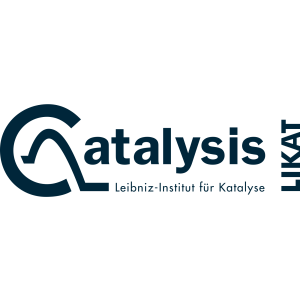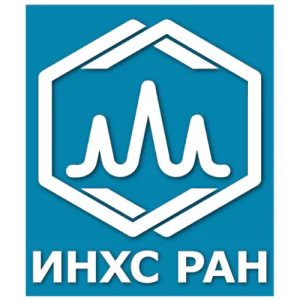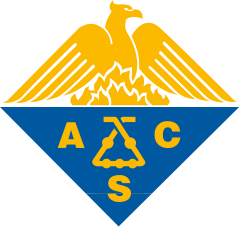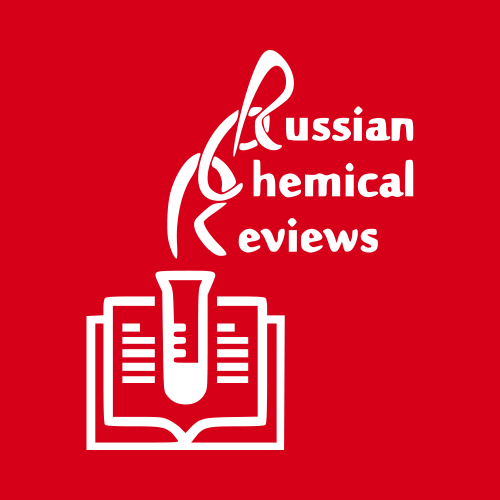Ni–In Synergy in CO2 Hydrogenation to Methanol
Jiadong Zhu
1
,
Francesco Cannizzaro
1
,
Liang Liu
1
,
Hao Zhang
1
,
Nikolay Kosinov
1
,
Ivo A W Filot
1
,
Jabor Rabeah
2
,
A. Brückner
2
,
Publication type: Journal Article
Publication date: 2021-08-29
scimago Q1
wos Q1
SJR: 3.782
CiteScore: 19.5
Impact factor: 13.1
ISSN: 21555435
PubMed ID:
34557327
General Chemistry
Catalysis
Abstract
Indium oxide (In2O3) is a promising catalyst for selective CH3OH synthesis from CO2 but displays insufficient activity at low reaction temperatures. By screening a range of promoters (Co, Ni, Cu, and Pd) in combination with In2O3 using flame spray pyrolysis (FSP) synthesis, Ni is identified as the most suitable first-row transition-metal promoter with similar performance as Pd–In2O3. NiO–In2O3 was optimized by varying the Ni/In ratio using FSP. The resulting catalysts including In2O3 and NiO end members have similar high specific surface areas and morphology. The main products of CO2 hydrogenation are CH3OH and CO with CH4 being only observed at high NiO loading (≥75 wt %). The highest CH3OH rate (∼0.25 gMeOH/(gcat h), 250 °C, and 30 bar) is obtained for a NiO loading of 6 wt %. Characterization of the as-prepared catalysts reveals a strong interaction between Ni cations and In2O3 at low NiO loading (≤6 wt %). H2-TPR points to a higher surface density of oxygen vacancy (Ov) due to Ni substitution. X-ray photoelectron spectroscopy, X-ray absorption spectroscopy, and electron paramagnetic resonance analysis of the used catalysts suggest that Ni cations can be reduced to Ni as single atoms and very small clusters during CO2 hydrogenation. Supportive density functional theory calculations indicate that Ni promotion of CH3OH synthesis from CO2 is mainly due to low-barrier H2 dissociation on the reduced Ni surface species, facilitating hydrogenation of adsorbed CO2 on Ov.
Found
Nothing found, try to update filter.
Found
Nothing found, try to update filter.
Top-30
Journals
|
5
10
15
20
25
|
|
|
ACS Catalysis
22 publications, 13.75%
|
|
|
Applied Catalysis B: Environmental
11 publications, 6.88%
|
|
|
Chemical Engineering Journal
7 publications, 4.38%
|
|
|
Journal of Energy Chemistry
6 publications, 3.75%
|
|
|
Catalysts
5 publications, 3.13%
|
|
|
Applied Surface Science
5 publications, 3.13%
|
|
|
Journal of Catalysis
5 publications, 3.13%
|
|
|
International Journal of Hydrogen Energy
4 publications, 2.5%
|
|
|
Fuel
3 publications, 1.88%
|
|
|
Advanced Energy Materials
3 publications, 1.88%
|
|
|
Catalysis Science and Technology
3 publications, 1.88%
|
|
|
Journal of Materials Chemistry A
3 publications, 1.88%
|
|
|
Physical Chemistry Chemical Physics
3 publications, 1.88%
|
|
|
Molecules
3 publications, 1.88%
|
|
|
Chinese Journal of Catalysis
3 publications, 1.88%
|
|
|
ACS applied materials & interfaces
3 publications, 1.88%
|
|
|
Industrial & Engineering Chemistry Research
3 publications, 1.88%
|
|
|
Journal of the American Chemical Society
2 publications, 1.25%
|
|
|
Journal of CO2 Utilization
2 publications, 1.25%
|
|
|
Journal of Physical Chemistry C
2 publications, 1.25%
|
|
|
Angewandte Chemie - International Edition
2 publications, 1.25%
|
|
|
Angewandte Chemie
2 publications, 1.25%
|
|
|
Journal of Fuel Chemistry and Technology
2 publications, 1.25%
|
|
|
Applied Catalysis A: General
2 publications, 1.25%
|
|
|
Chemical Science
2 publications, 1.25%
|
|
|
Science China Chemistry
2 publications, 1.25%
|
|
|
Chemical Engineering Science
2 publications, 1.25%
|
|
|
Green Chemistry and Sustainable Technology
2 publications, 1.25%
|
|
|
ChemCatChem
2 publications, 1.25%
|
|
|
Journal of Environmental Chemical Engineering
2 publications, 1.25%
|
|
|
5
10
15
20
25
|
Publishers
|
10
20
30
40
50
60
70
|
|
|
Elsevier
67 publications, 41.88%
|
|
|
American Chemical Society (ACS)
39 publications, 24.38%
|
|
|
Wiley
18 publications, 11.25%
|
|
|
MDPI
13 publications, 8.13%
|
|
|
Royal Society of Chemistry (RSC)
13 publications, 8.13%
|
|
|
Springer Nature
8 publications, 5%
|
|
|
Korean Society of Industrial Engineering Chemistry
1 publication, 0.63%
|
|
|
Autonomous Non-profit Organization Editorial Board of the journal Uspekhi Khimii
1 publication, 0.63%
|
|
|
10
20
30
40
50
60
70
|
- We do not take into account publications without a DOI.
- Statistics recalculated weekly.
Are you a researcher?
Create a profile to get free access to personal recommendations for colleagues and new articles.
Metrics
160
Total citations:
160
Citations from 2024:
98
(61.26%)
Cite this
GOST |
RIS |
BibTex |
MLA
Cite this
GOST
Copy
Zhu J. et al. Ni–In Synergy in CO2 Hydrogenation to Methanol // ACS Catalysis. 2021. Vol. 11. No. 18. pp. 11371-11384.
GOST all authors (up to 50)
Copy
Zhu J., Cannizzaro F., Liu L., Zhang H., Kosinov N., Filot I. A. W., Rabeah J., Brückner A., Hensen E. J. M. Ni–In Synergy in CO2 Hydrogenation to Methanol // ACS Catalysis. 2021. Vol. 11. No. 18. pp. 11371-11384.
Cite this
RIS
Copy
TY - JOUR
DO - 10.1021/acscatal.1c03170
UR - https://doi.org/10.1021/acscatal.1c03170
TI - Ni–In Synergy in CO2 Hydrogenation to Methanol
T2 - ACS Catalysis
AU - Zhu, Jiadong
AU - Cannizzaro, Francesco
AU - Liu, Liang
AU - Zhang, Hao
AU - Kosinov, Nikolay
AU - Filot, Ivo A W
AU - Rabeah, Jabor
AU - Brückner, A.
AU - Hensen, Emiel J. M.
PY - 2021
DA - 2021/08/29
PB - American Chemical Society (ACS)
SP - 11371-11384
IS - 18
VL - 11
PMID - 34557327
SN - 2155-5435
ER -
Cite this
BibTex (up to 50 authors)
Copy
@article{2021_Zhu,
author = {Jiadong Zhu and Francesco Cannizzaro and Liang Liu and Hao Zhang and Nikolay Kosinov and Ivo A W Filot and Jabor Rabeah and A. Brückner and Emiel J. M. Hensen},
title = {Ni–In Synergy in CO2 Hydrogenation to Methanol},
journal = {ACS Catalysis},
year = {2021},
volume = {11},
publisher = {American Chemical Society (ACS)},
month = {aug},
url = {https://doi.org/10.1021/acscatal.1c03170},
number = {18},
pages = {11371--11384},
doi = {10.1021/acscatal.1c03170}
}
Cite this
MLA
Copy
Zhu, Jiadong, et al. “Ni–In Synergy in CO2 Hydrogenation to Methanol.” ACS Catalysis, vol. 11, no. 18, Aug. 2021, pp. 11371-11384. https://doi.org/10.1021/acscatal.1c03170.












